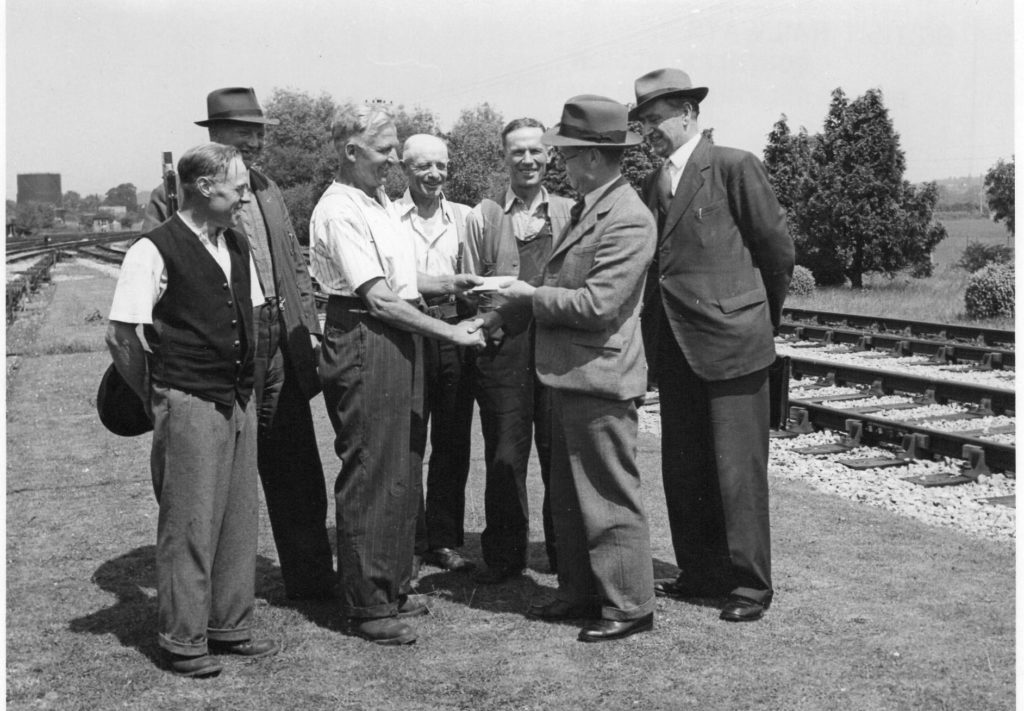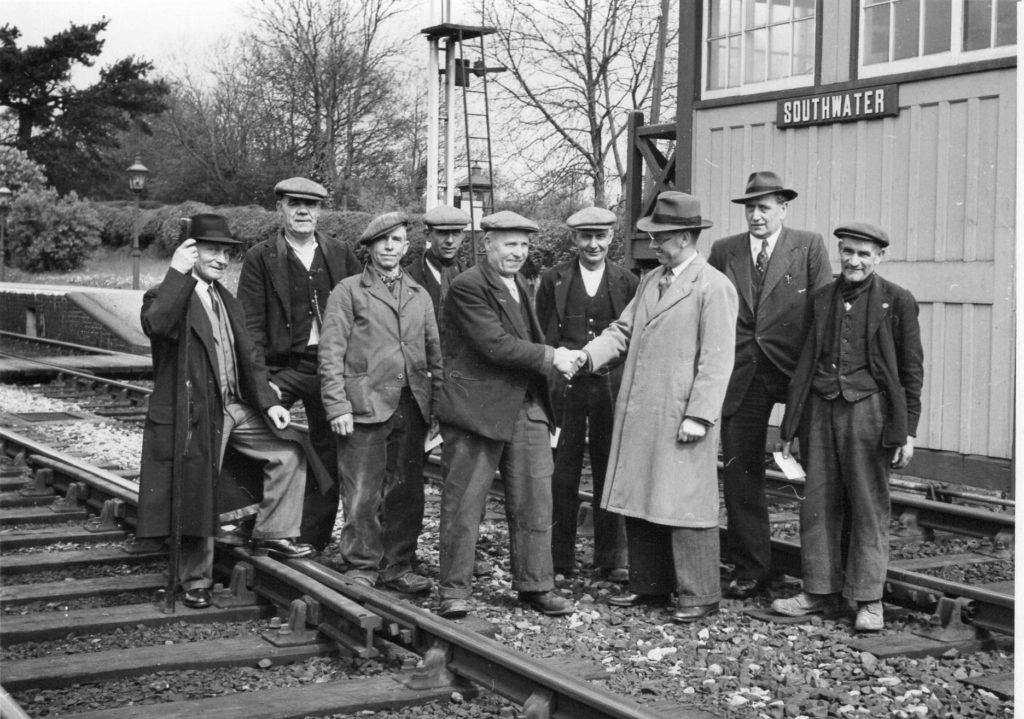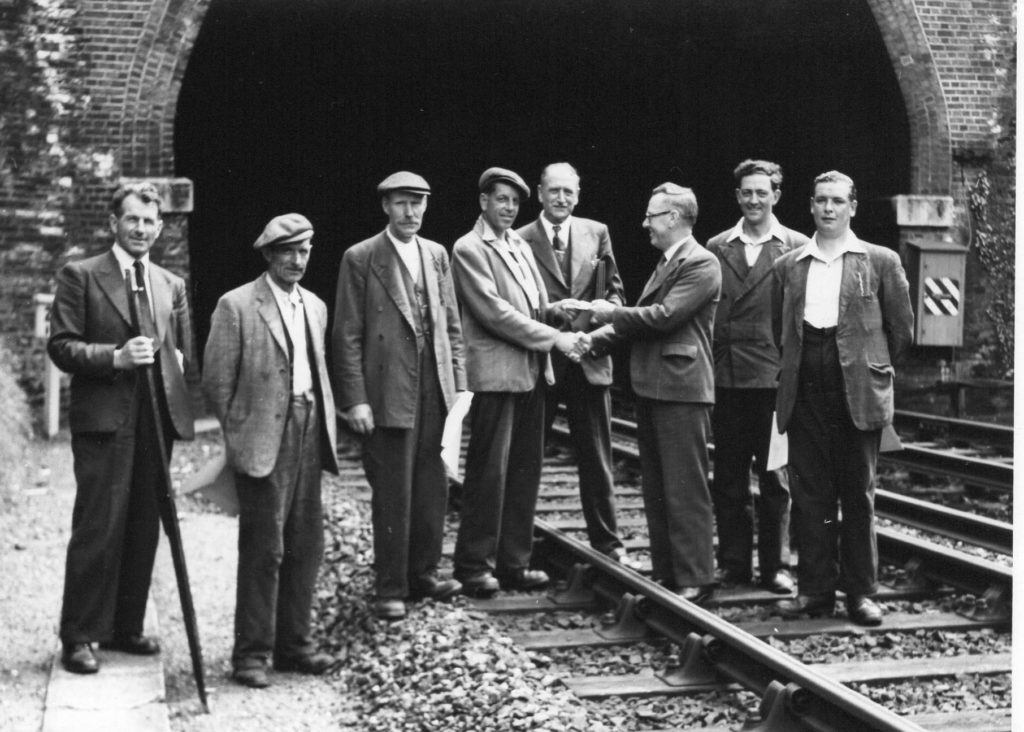Like many others I spent most of my working life in the employ of British Railways. I recall the original application form for employment I filled in, and my surprise that it asked me to list any family members who were already in their employment. I also remember my concern at being asked to countersign conditions of employment that clearly specified that I must agree to live “within a mile of my home station”. But there were distinct and real advantages to being part of a dedicated organisation that tried hard to do what was best for the railway.
Workforce motivation is best when it comes from feeling you are part of the railway family. We all benefit if everyone working on the railway feels they belong and works together to stay safe and get the job done. Sadly, today there are still individuals who look to work around rather than follow the rules and best practice, which we need to be able to work safely. ‘Human factors’ played a large role in the recent incidents that follow, but I wonder if these could have been avoided had the individuals involved felt they were working as part of a greater entity?
An avoidable near miss
A Safety Digest from the Rail Accident Investigation Branch (RAIB) was issued on 30 September following a near miss at 04:12 on the morning of 22 July. A Class 390 Electrical Multiple Unit (empty coaching stock) was travelling from Longsight Depot to Lancaster and, as it approached Eccles Station in Greater Manchester, the driver saw workers wearing reflective clothing on the track. He sounded the train horn and applied the emergency brake. The workers managed to get clear with four seconds to spare before the train passed them travelling at 69 mph. The Controller of Site Safety (COSS) saw the train come to a stop and rang the signaller from his mobile.
The plan was for safeguarded working. The workers were a contractor’s painting staff and the COSS (from an agency) was the nominated Person in Charge. Similar work painting white lines on the platform edge had been completed on each of the previous three nights, with Patricroft Station being painted earlier that same night. The line blockage covered both lines and stations between 00:01 and 05:00, protected by signals with no additional protection.
Discussions between the COSS and the signaller had confirmed that scheduled trains were running, work would need to stop, and the blockage be given up for each train to pass. Calls to take and give back took between two and eight minutes.
At 04:10 the COSS told the signaller that the line was clear, and trains could operate, but he had not told the workers. At 04:11 he contacted them using his mobile phone and told them to move clear. As the call ended, they heard the horn of the approaching train.
The Rule Book is clear, stating: “COSS should stay with your group so you are able to personally observe and advise everyone until work is completed and your group is no longer on or near the line.”
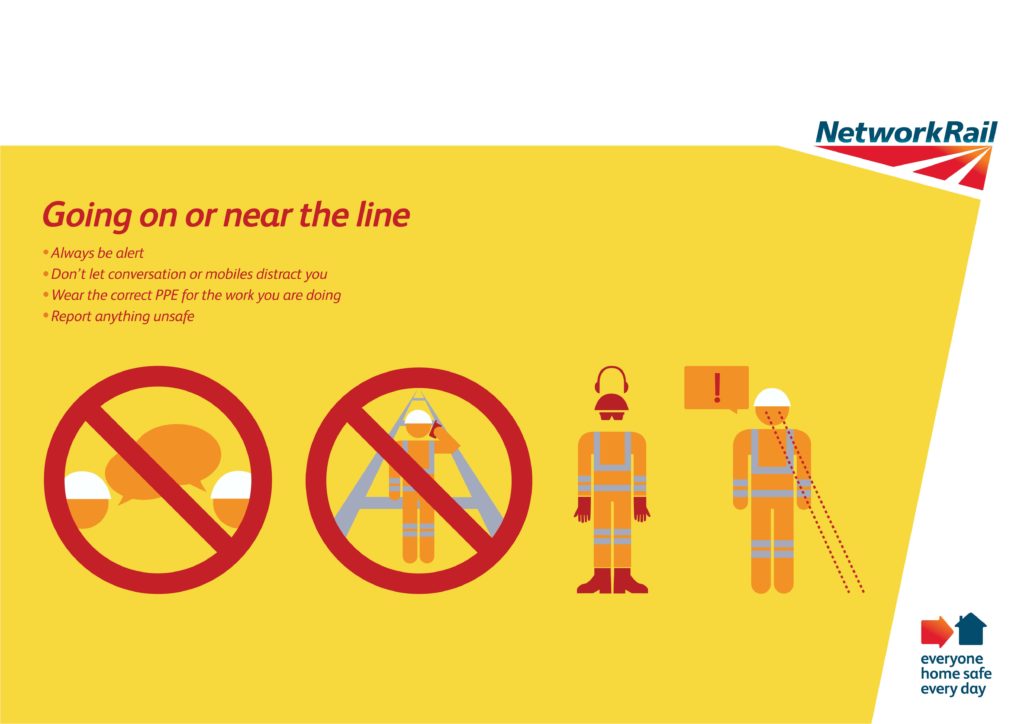
Lucky escape for MOM
September also saw the publication of RAIB’s Report 06/2021, following its investigation into a near miss with a Network Rail Mobile Operations Manager (MOM) at Rowlands Castle Station on 19 December 2020.
On that day the Prime Minister had announced the restrictive Tier 4 Christmas lockdown, which “caused the MOM considerable distress associated with personal circumstances”. The near miss occurred at 19:14 when the MOM came close to being struck by a passenger train. He was on track retrieving a rubbish bag when the train approached at about 60 mph. The MOM climbed back onto the platform and was clear of the line just one second before the train passed.
The report states that “the incident happened because the MOM had not arranged protection from train movements before going onto the track. The MOM and the signaller did not have a mutual or accurate understanding of the reality of the situation, and consequently the MOM was unaware that the train was approaching.” Underlying causes are listed as being “associated with the MOM’s competence, which was not adequately managed to ensure he worked safely on the track, and local management not functioning properly, which probably affected the recruitment, training and ongoing monitoring of the MOM.”
Train strikes hand trolley
Network Rail’s Safety Central website has long ago earned my appreciation for its open approach to making those who work on its infrastructure aware of accidents and incidents which hopefully may reduce the likelihood of their being repeated.
On Wednesday 8 September a train struck a hand trolley that had been left on the Up Main near Twickenham Station. The trolley ended up stuck under the front carriage of the train. The area is fitted with axle counters using the Line Clear Verification process. The Safety Central reference is NRA21-14, and I hope to find an update explaining how the trolley was forgotten!
Waterloo Underground fatality
On 7 September RAIB published its report on the fatal accident involving a passenger that occurred at Waterloo Underground Station on 26 May last year. At around 10:10 that day the passenger fell between the platform and the Bakerloo line train from which he had just alighted.
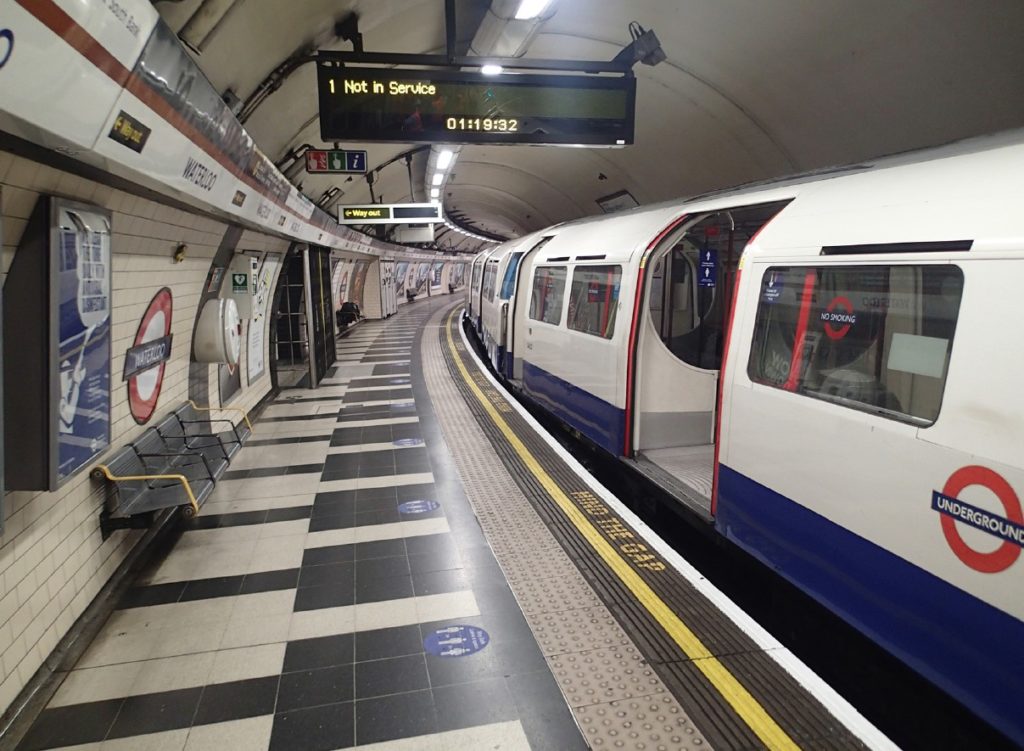
The platform is curved and has platform mounted mirrors targeted on the platform train interface. The passenger was unable to free himself and the train departed with him still in the gap. The operator of the following train was unaware, being focussed on the platform and the trains stopping point.
RAIB found that London Underground’s risk assessment “did not enable the identification and detailed assessment of all factors that contributed to higher platform interface risk at certain platforms.” It also found that “the model used to quantify risk makes no allowance for non-fatal injuries, and so understates the risk of harm to passengers”.
The RAIB report makes three recommendations. The first relates to location specific risks, the second to the need for “ongoing evaluation of existing safety measures” and the third to the “effective delivery of actions proposed by internal investigation recommendations”.
Collision between tram and cyclist
At 19:25 on 1 September a Manchester Metrolink tram travelling between Audenshaw and Droylsden on the East Manchester Line struck and seriously injured a child cyclist. At that location trams run in ‘on street’ mode. The cyclist was crossing Droylsden Road at a ‘Puffin’ pedestrian crossing which is controlled by road traffic and pedestrian signal lights.
RAIB’s investigation will consider the design and configuration of the crossing, how the crossing was risk assessed, legislation and industry guidance on the design and configuration of pedestrian crossings where trams run ‘on street’, and any “relevant underlying factors”.
Kisby UWC Collision
RAIB is investigating this accident which resulted in the derailment of a freight train. At 09:01 on the morning of 19 August, a Class 66 locomotive with 36 container wagons struck a loaded farm trailer on this User Worked Crossing (UWC) which is near March in Cambridgeshire. The train driver applied the emergency brake just six seconds before impact, but the train was consequently still travelling at 58mph when it struck the trailer.
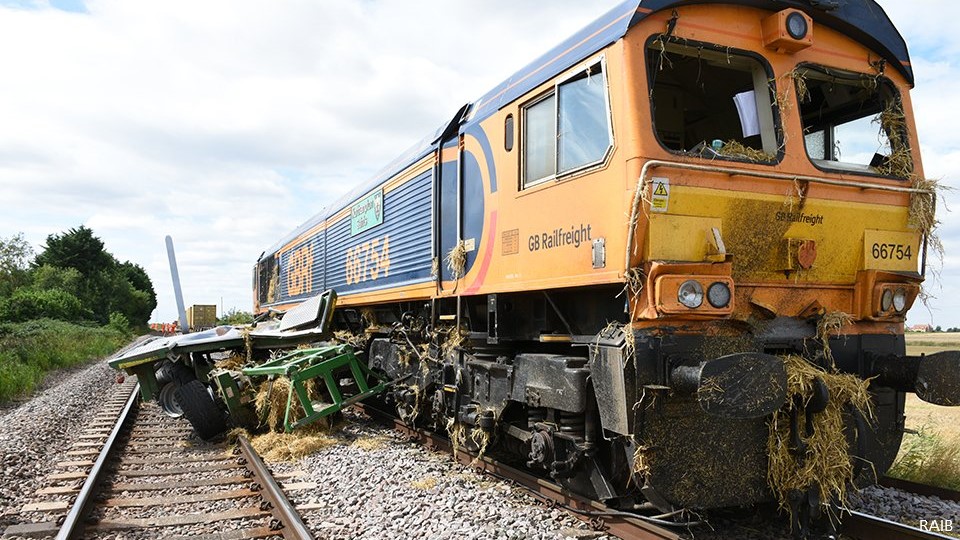
The train ran on for 780 metres before stopping. Both drivers suffered shock and the train driver sustained minor injuries. It took four days for the recovery of the vehicles involved and the repairs to track and infrastructure so that trains could run again.
Kisby UWC is fitted with a telephone and “user operated powered gates” that are not interlocked with the railway signalling system. Signs at the crossing direct users to telephone to obtain permission from the signaller before opening the gates and crossing the railway. RAIB is investigating and has said it has “been unable to find any evidence that a request to use the crossing was made by the driver of the tractor involved”.
The way things were
Modern equipment, including computerised flows of information, has brought enormous benefits. But I believe that the railway has been damaged by the separation of its workforce into contractors, subcontractors, consultants and subconsultants, right down to individuals whose working employers change day-by-day. We all need to understand the strengths and foibles of those we work with.
Arguably, both efficiency and safety are improved by groups and individuals who know each other, warts and all. When we begin to learn more details of how Great British Railways will work, looking back and picking out what used to work well will surely be beneficial. As a taster you may like these pictures of yesteryear when prize lengths of track and improvements in track quality earned individual and gang recognition.
